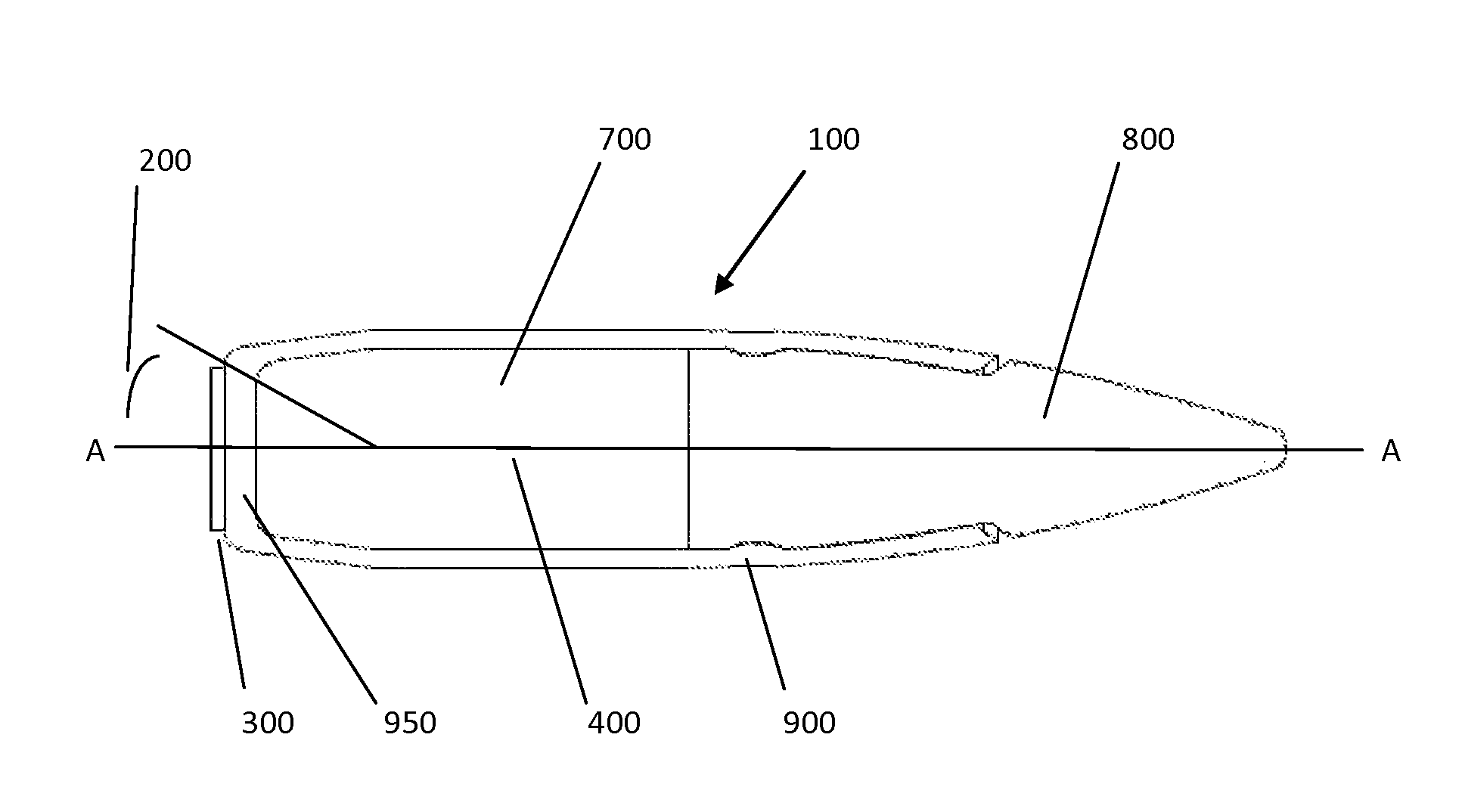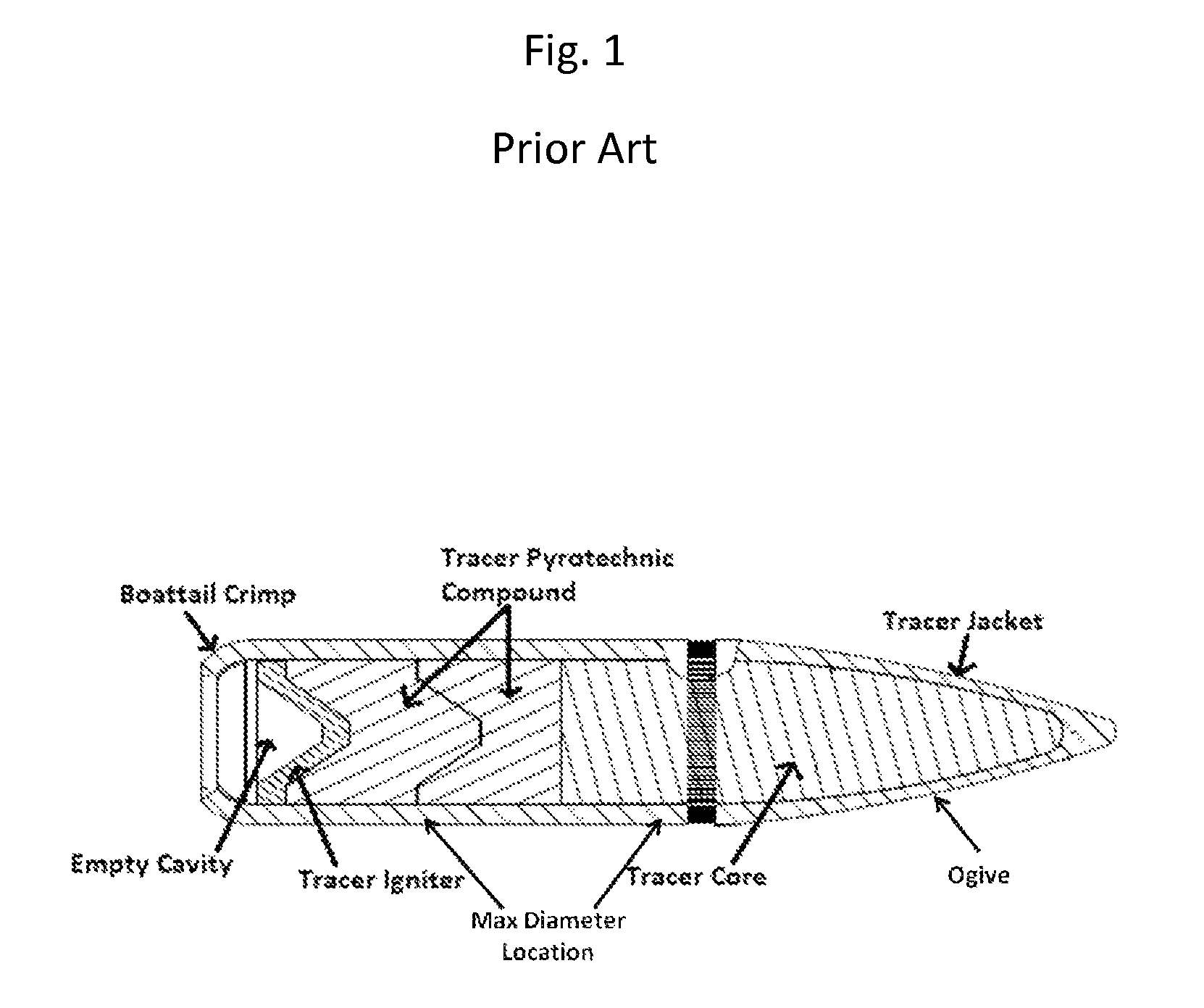Non-pyrotechnic, low observable tracer
- Summary
- Abstract
- Description
- Claims
- Application Information
AI Technical Summary
Benefits of technology
Problems solved by technology
Method used
Image
Examples
examples
[0033]As an example of a preferred embodiment of the present invention, the Ca / Sr / S phosphor material useful in the present invention can be prepared in a typical reaction, using chemicals which were reagent grade, purchased from Sigma-Aldrich Corporation, without any further purification; wherein for example: 10 g CaCO3, 10 g S, 0.05 g KCl, and 0.05 g NaCl, are mixed with the corresponding amounts of the dopant ingredients—such as the rare earth chlorides (EuCl3, SmCl3, DyCl3CeCl3) and / or transition metal chlorides (MnCl2, CuCl2 and AlCl3) and placed in a ball mill (Retsch, PM 100) at 300 RPM for four hours. The resulting mixture was then fired in a furnace (Thermo Scientific, ED 1545M) for two hours at 1200° C. in an oxygen free zone. To achieve an oxygen free environment the double crucible method is implemented. The inner crucible contains the mixture and the outer one is filled with graphite to scavenge oxygen.
[0034]As a second example of another preferred embodiment of the pre...
PUM
 Login to View More
Login to View More Abstract
Description
Claims
Application Information
 Login to View More
Login to View More - R&D
- Intellectual Property
- Life Sciences
- Materials
- Tech Scout
- Unparalleled Data Quality
- Higher Quality Content
- 60% Fewer Hallucinations
Browse by: Latest US Patents, China's latest patents, Technical Efficacy Thesaurus, Application Domain, Technology Topic, Popular Technical Reports.
© 2025 PatSnap. All rights reserved.Legal|Privacy policy|Modern Slavery Act Transparency Statement|Sitemap|About US| Contact US: help@patsnap.com



